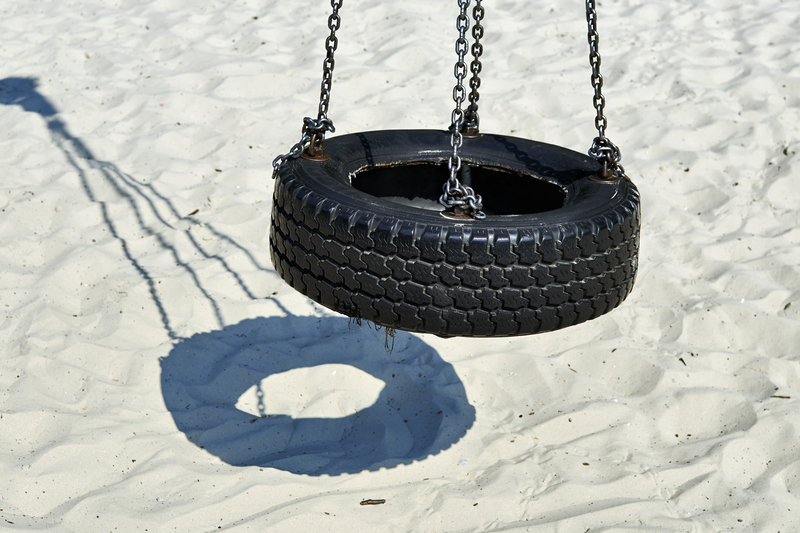Exploring Solutions to Halt Microplastic Pollution
Microplastic pollution has emerged as one of the most critical environmental challenges of the 21st century. These microscopic plastic particles, defined as items less than five millimeters in size, are found everywhere--from the depths of the oceans to the highest mountain peaks. The urgency to fight microplastic contamination is gaining global attention. Driven by the need to protect ecosystems, wildlife, and human health, innovative methods and actionable solutions are being researched and implemented worldwide. In this comprehensive article, we will explore effective tactics to halt microplastic pollution, discuss their impact, and suggest how everyone can contribute to a cleaner future.
Understanding Microplastics: Sources and Environmental Impact
What Are Microplastics?
Microplastics are tiny plastic fragments resulting from the breakdown of larger plastic debris--or manufactured explicitly small, like microbeads in personal care products. There are two main categories:
- Primary microplastics: Small particles intentionally made for industrial use--like microbeads in cosmetics or nurdles (plastic pellets used in manufacturing).
- Secondary microplastics: Result from degradation of larger plastics--like bottles and bags--because of sun exposure, wave action, and other environmental factors.
Why is Microplastic Pollution a Threat?
Microplastic debris infiltrates food chains, contaminates drinking water, and disrupts marine and terrestrial ecosystems. Its persistent, non-biodegradable nature means these plastics remain in the environment for decades. Recent studies reveal alarming evidence of microplastics in human organs, rainwater, and even the air, underlying the urgent need for comprehensive measures to stop microplastic contamination.

Innovative Solutions to Stop Microplastic Pollution
To reverse the trend of microplastic pollution, a multi-pronged approach is necessary. Let's delve into some of the most promising methods being championed globally.
1. Source Reduction: Changing Our Plastic Dependency
The most straightforward way to restrict microplastics is to reduce the production, use, and disposal of single-use plastics. Strategies here include:
- Banning Microbeads and Single-Use Plastics: Many countries and regions have enacted bans on microbeads in personal care products and various single-use items. The EU, UK, Canada, and parts of Asia have led these changes, reducing primary microplastic sources.
- Promoting Plastic Alternatives: Biodegradable and compostable materials, such as paper, bamboo, and plant-based polymers, are increasingly replacing harmful plastics in packaging and consumer goods.
- Adopting Zero-Waste Lifestyles: Grassroots movements and zero-waste stores encourage consumers to eliminate plastic waste at the source, minimizing the potential for microplastic generation.
2. Advances in Waste Management and Recycling Systems
Effective waste management is crucial to halt microplastic pollution before plastics break down into micro-sized contaminants. Solutions involve:
- Improved Recycling Technologies: Modern, high-efficiency recycling plants utilize advanced sorting and cleaning to minimize plastic leaks into the environment.
- Plastic Collection Initiatives: Community clean-up programs and global collaborations like 'The Ocean Cleanup' physically remove plastics before they fragment.
- Enhanced Wastewater Treatment: Upgrading water treatment plants with finer filters and innovative removal technologies helps capture microplastics before they enter rivers and oceans.
3. Innovations in Product Design and Manufacturing
Product redesign can drastically limit microplastic shedding, especially from textiles, tires, and industrial materials:
- Eco-friendly Textiles: The fashion industry is moving towards natural fibers, like cotton, hemp, and linen, to curb microfiber pollution from synthetic fabrics.
- Microfiber Catchers for Washing Machines: In-drum filters and laundry balls--like 'Guppyfriend' and 'Cora Ball'--trap microfibers during washing, preventing them from reaching waterways.
- Sustainable Tire Technology: Research is ongoing into alternative tire compounds that emit fewer microplastics during wear-and-tear on roads.
4. Cutting-Edge Cleanup Technologies
While prevention is vital, removing existing microplastics from the environment remains a top priority. Some notable efforts include:
- Water Filtration Innovations: Engineers are creating advanced filtration membranes, often incorporating nanotechnology or bio-based materials, that can selectively capture microplastic particles from water sources.
- Magnetic Extraction Techniques: Groundbreaking research uses magnetic nanoparticles that bind with microplastics, making them easier to remove from water via magnets.
- Bioremediation: Certain bacteria and fungi have shown potential to decompose or assimilate microplastics, opening avenues for environmentally friendly cleanup strategies.
5. Legislative Action and Policy Initiatives
Governmental oversight plays a pivotal role in combating microplastic pollution. Effective policies include:
- Stricter Regulations: Global treaties, ambitious targets, and enforceable laws can mandate reduced plastic use, improved labeling, and producer responsibility for plastic waste.
- Incentives for Industry Change: Tax breaks, subsidies, or awards for companies innovating in plastic reduction or microplastic capture underline the importance of positive reinforcement.
- International Collaboration: Transnational initiatives, such as the UN's Clean Seas campaign, align nations towards uniform goals to halt microplastic discharge and share best practices.
Community Engagement and Individual Responsibility
Educating and Empowering Consumers
One of the most effective solutions to stem microplastic pollution is public awareness. Well-informed citizens are more likely to make responsible choices, advocate for systemic change, and participate in cleanup efforts:
- Environmental Education: Incorporating microplastic topics into school curricula increases understanding from a young age.
- Consumer Pressure: Boycotting products with unnecessary plastic packaging or microplastic ingredients sends a clear signal to manufacturers.
- Plastic-Free Challenges: Global movements like 'Plastic Free July' mobilize individuals and families to reduce single-use plastics in their daily lives.
How Can You Help Halt Microplastic Pollution?
Empowering yourself to make a difference could include:
- Choosing Natural Fibers: Opt for clothing, linens, and home textiles made from organic materials.
- Reducing Plastic Use: Switch to reusable bags, bottles, and containers wherever possible.
- Proper Waste Sorting: Separate plastics from organic waste to boost recycling efficiency.
- Supporting Legislation: Vote for candidates and policies prioritizing environmental controls on plastic usage and waste management.
- Advocating for Change: Join environmental NGOs, support petitions, and participate in community cleanups.
The Role of Science and Research in Microplastic Solutions
Scientific advances are key in the race to halt microplastic pollution. Continuous research provides better understanding and new technologies, including:
- Analysis and Monitoring: Development of sensitive detection methods (e.g., FTIR spectroscopy) enables researchers to trace microplastics accurately and assess their environmental footprint.
- Health Impact Studies: Investigations into microplastic interactions with human biology drive preventive policy and medical advisories.
- Eco-Friendly Material Science: Breakthroughs in biodegradable polymers and green chemistry reshape how future products are designed.
Global Success Stories and Case Studies
The movement to stop microplastic contamination is yielding encouraging results in various regions:
- Norway: The introduction of a nationwide plastic bottle deposit system has achieved a near 97% recycling rate, slashing bottle-related microplastic pollution.
- India: Certain states have banned single-use plastics, resulting in less plastic litter entering the environment and lower microplastic fragmentation rates.
- United States: Non-profit and academic-led cleanups and research projects have pioneered river and coastline restoration using both manual and high-tech approaches.
- Kenya: Bans on plastic bags have significantly reduced visible plastic waste and made rivers and urban areas cleaner.
- Japan: Advanced wastewater treatment regulations require the installation of microplastic-removal filters, minimizing urban run-off of microplastics.

Challenges and Future Directions
Despite great progress in combatting microplastics, formidable obstacles remain:
- Sheer Volume and Complexity: Trillions of microplastic pieces are already present in global ecosystems, many too small to be collected or detected.
- Fragmentation and Persistence: Once plastic enters the environment, its continued breakdown creates even more fragments, compounding the contamination issue.
- Transboundary Pollution: Microplastics cross borders via water and air, making coordinated global response essential.
The future will rely on cutting-edge technology, greater international partnerships, and long-term, systemic changes in production, consumption, and waste handling. Prioritizing innovation and swift action will help the global community curb the threat of microplastic pollution effectively.
Conclusion: Building a Microplastic-Free Future
Microplastic pollution is a shared problem--but it is also a shared responsibility. Solutions must be interdisciplinary, uniting policymakers, businesses, researchers, and consumers. By reducing plastic use, enforcing regulations, encouraging scientific research, and fostering informed community action, we can collectively turn the tide. As individuals, every small choice--reusable bags, plastic-free products, participation in cleanups--moves us one step closer to a microplastic-free world.
Learning, adapting, and innovating will help humanity halt microplastic contamination--ensuring healthier oceans, thriving wildlife, and a cleaner future for generations to come.